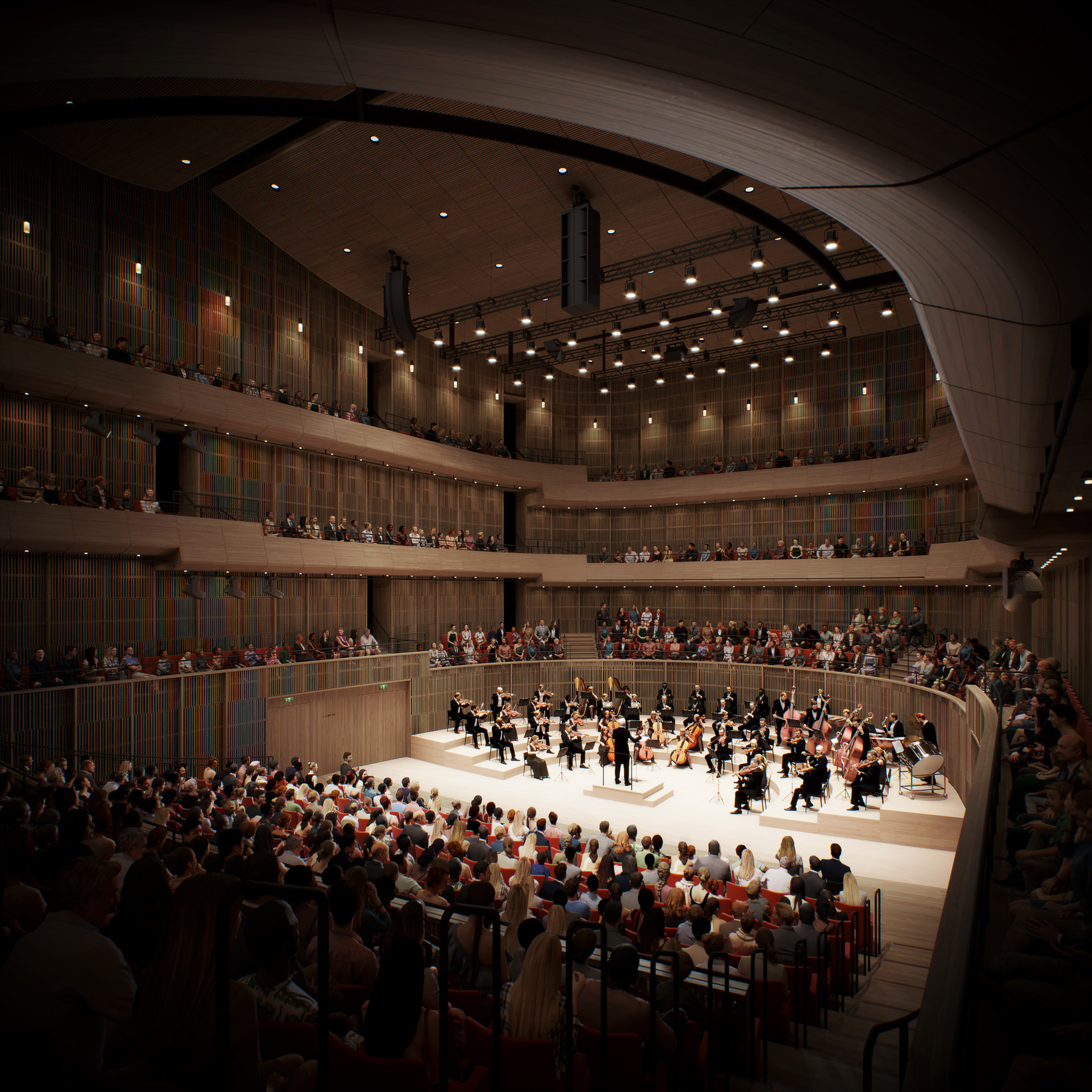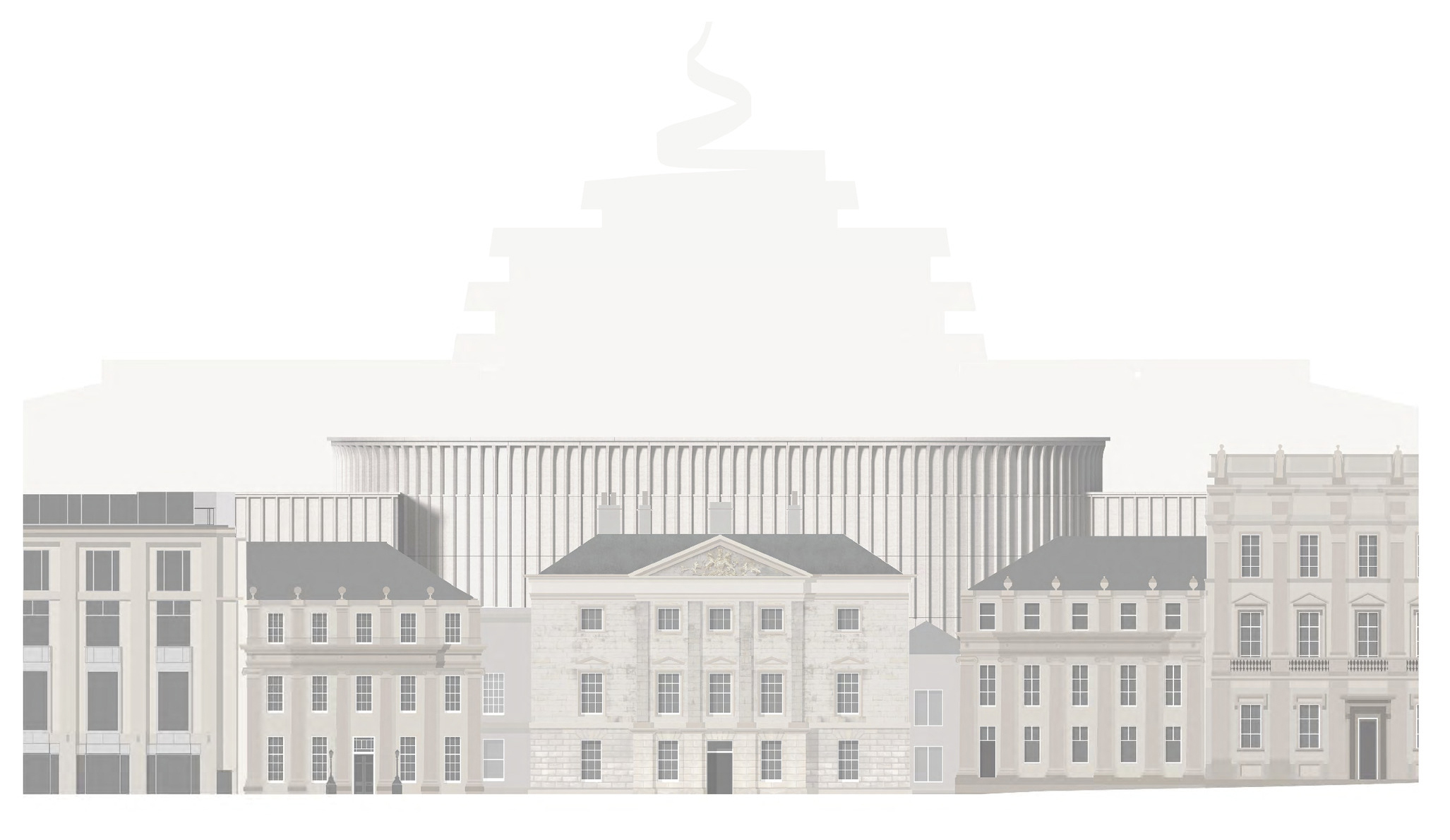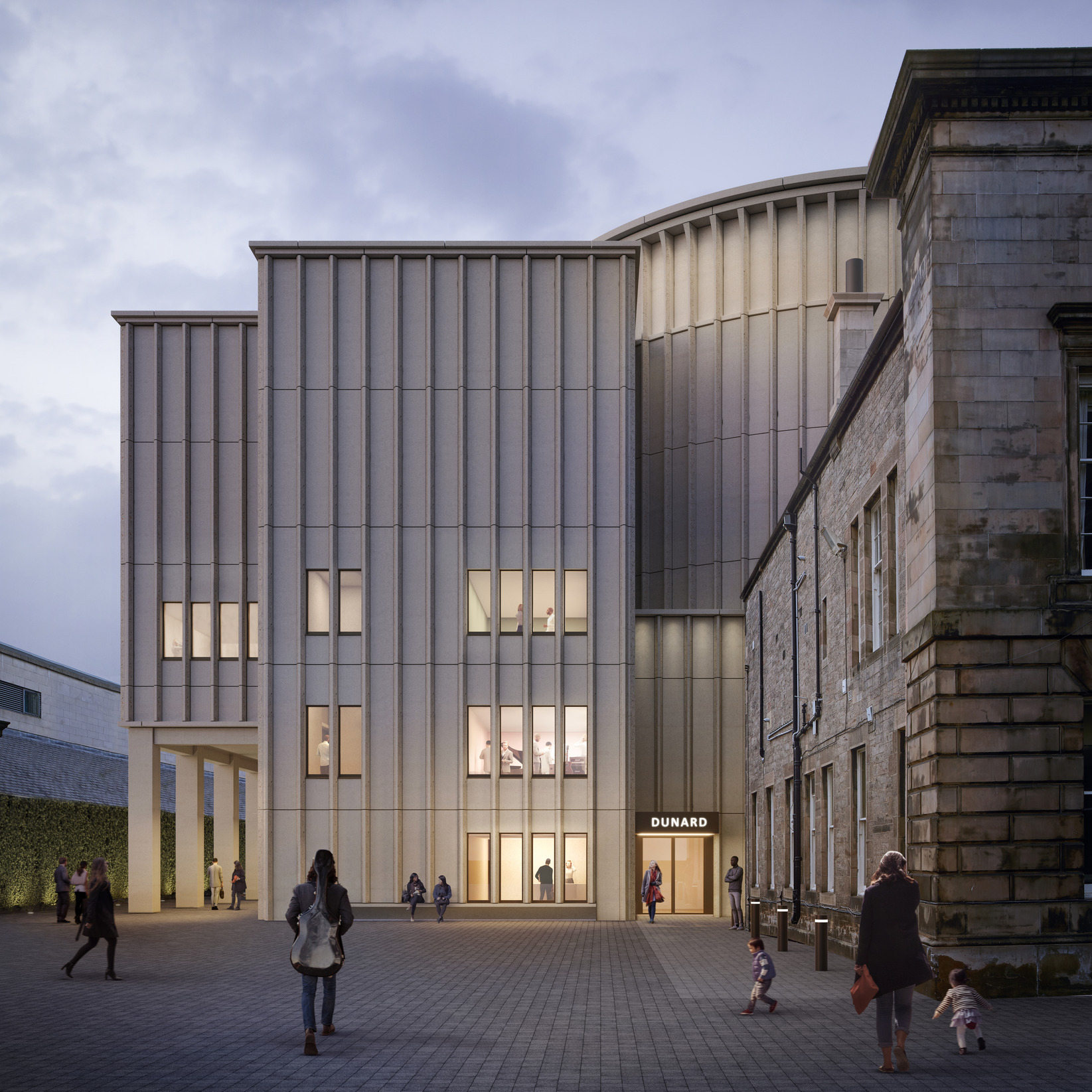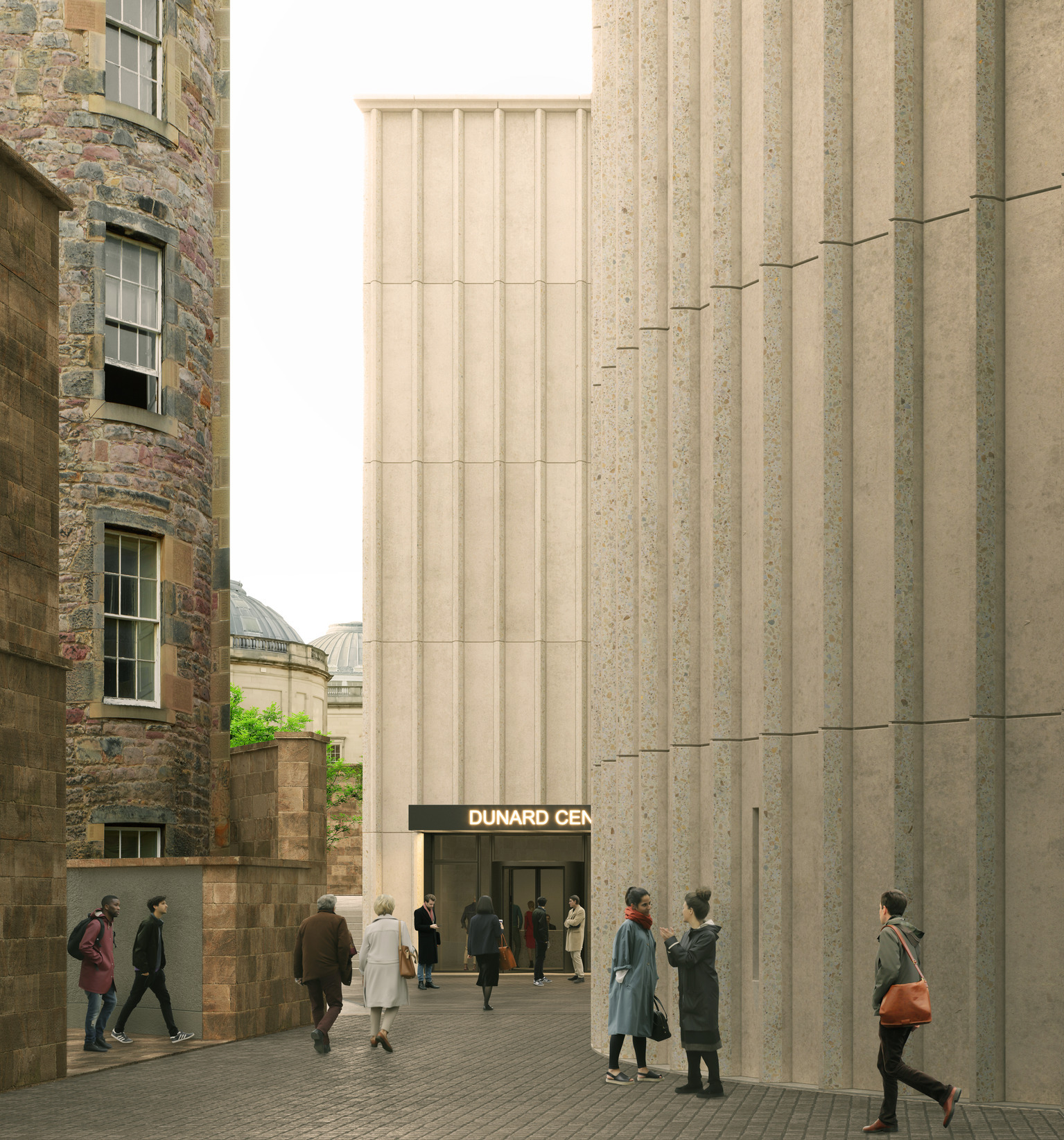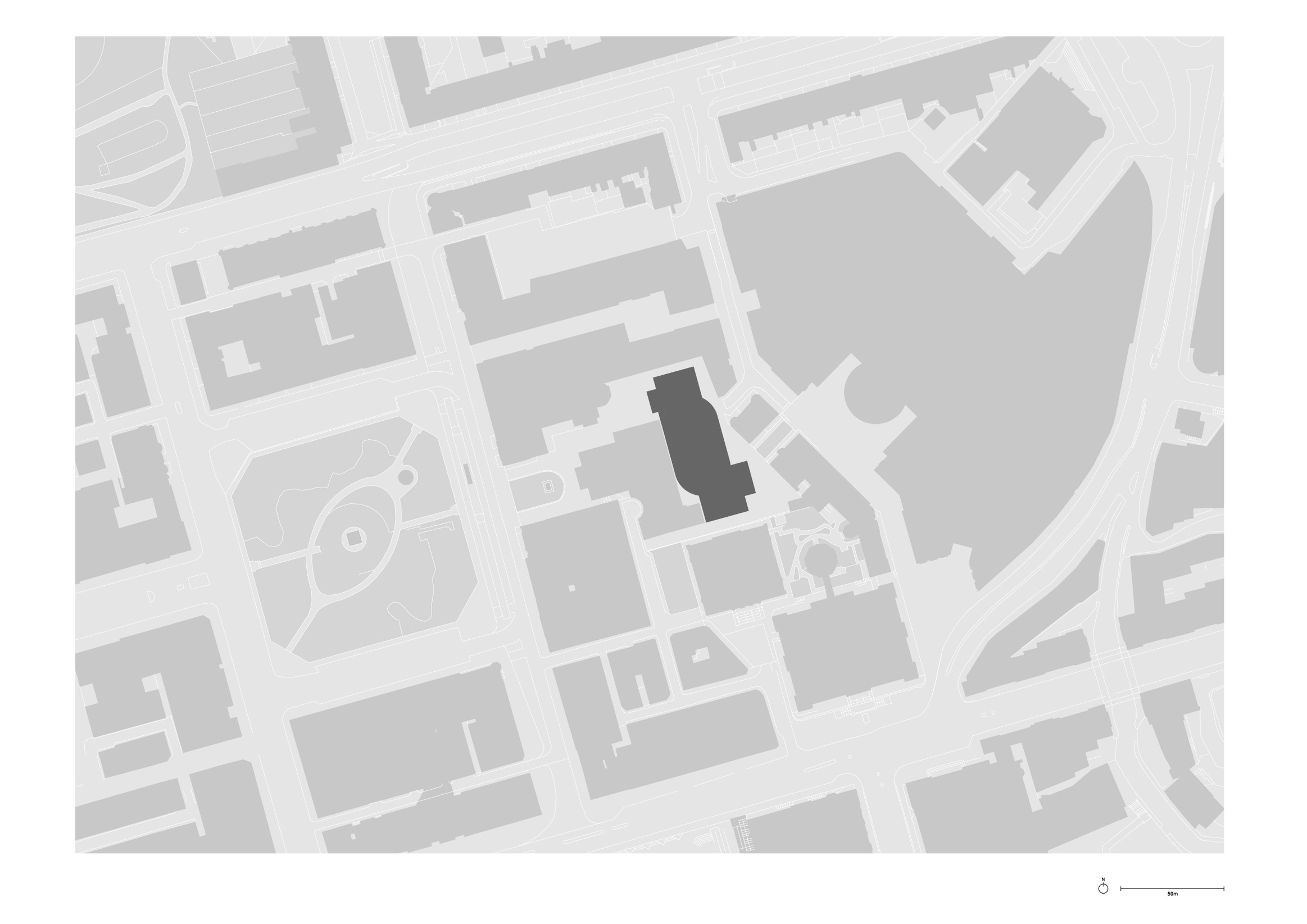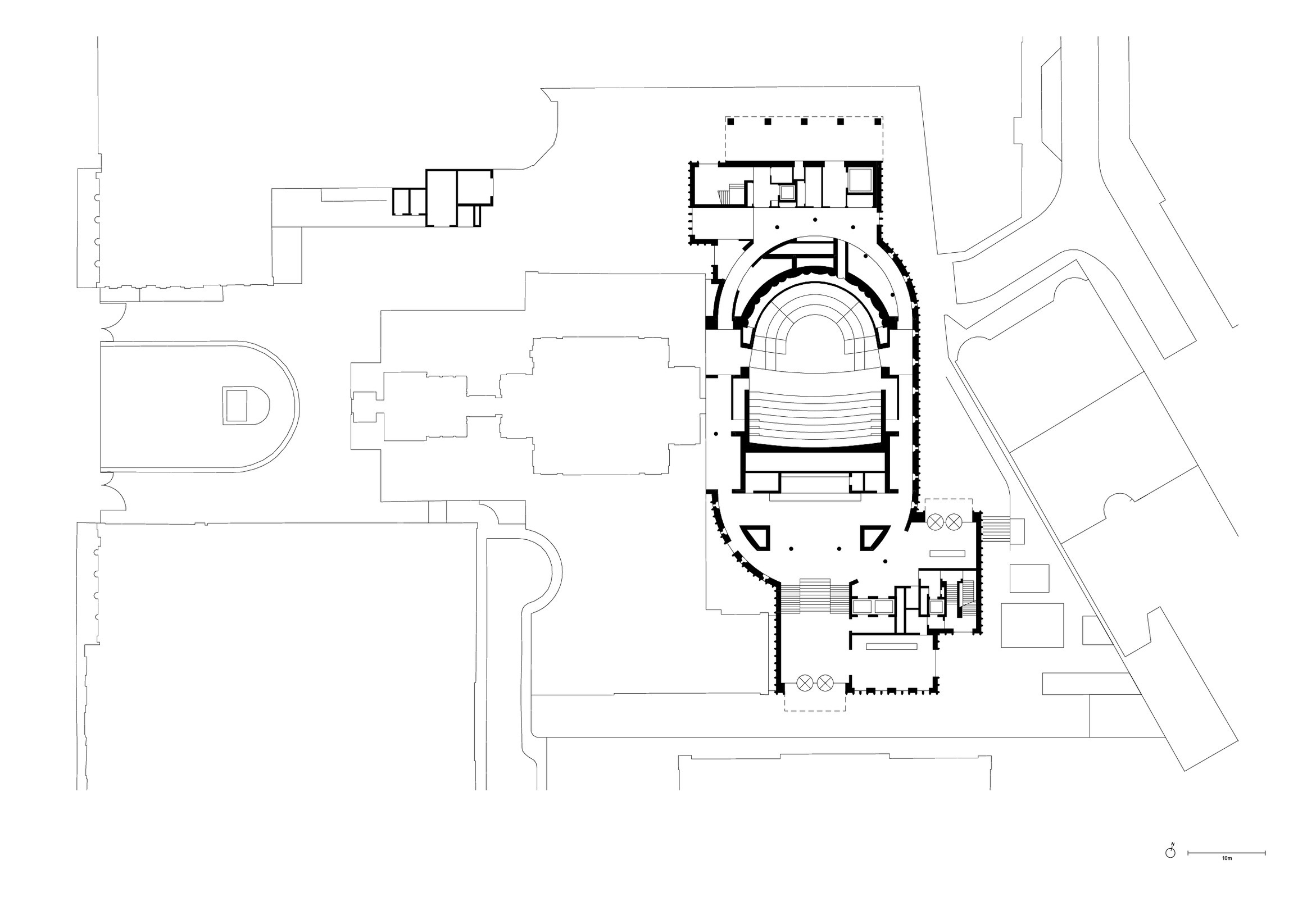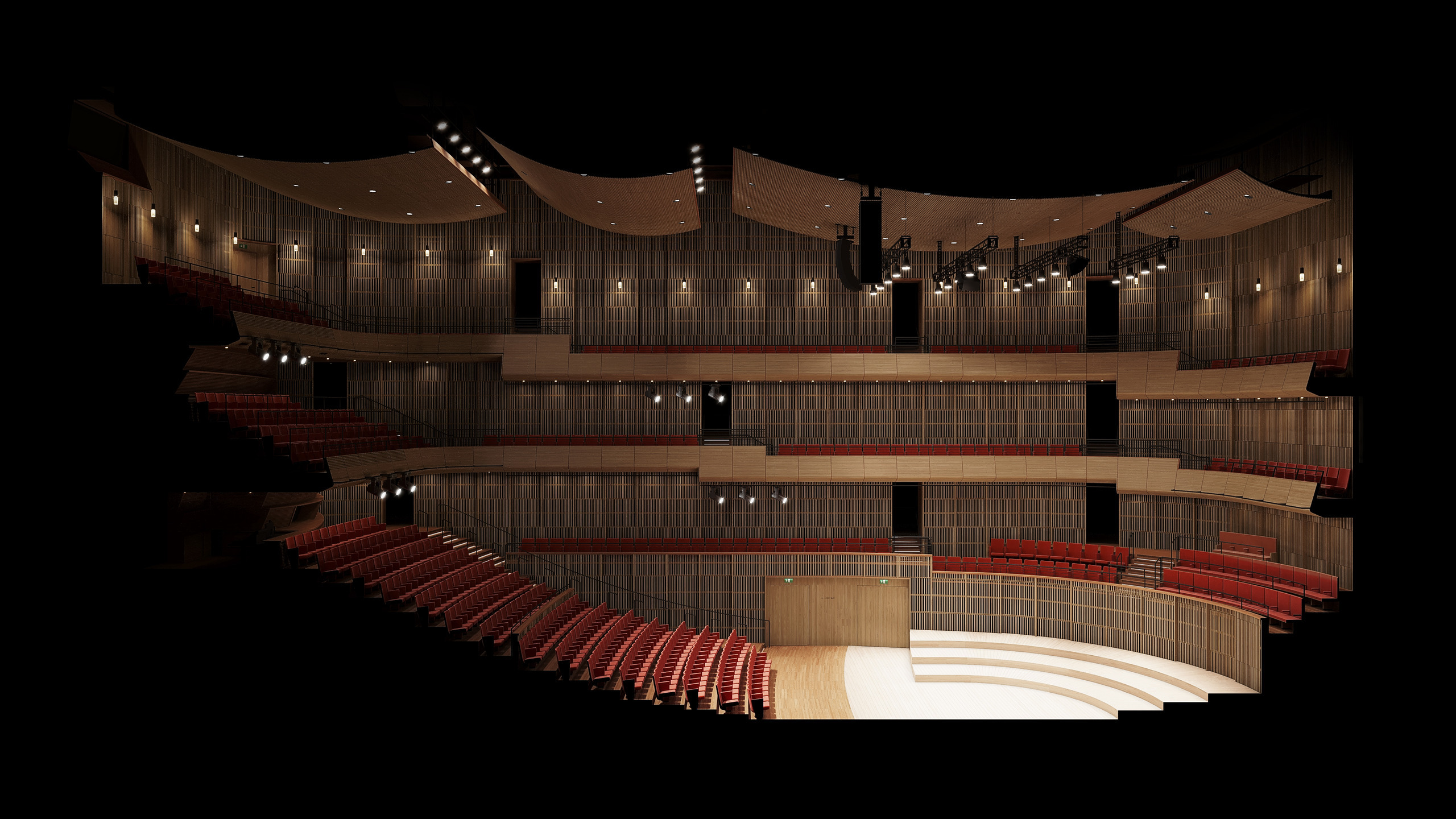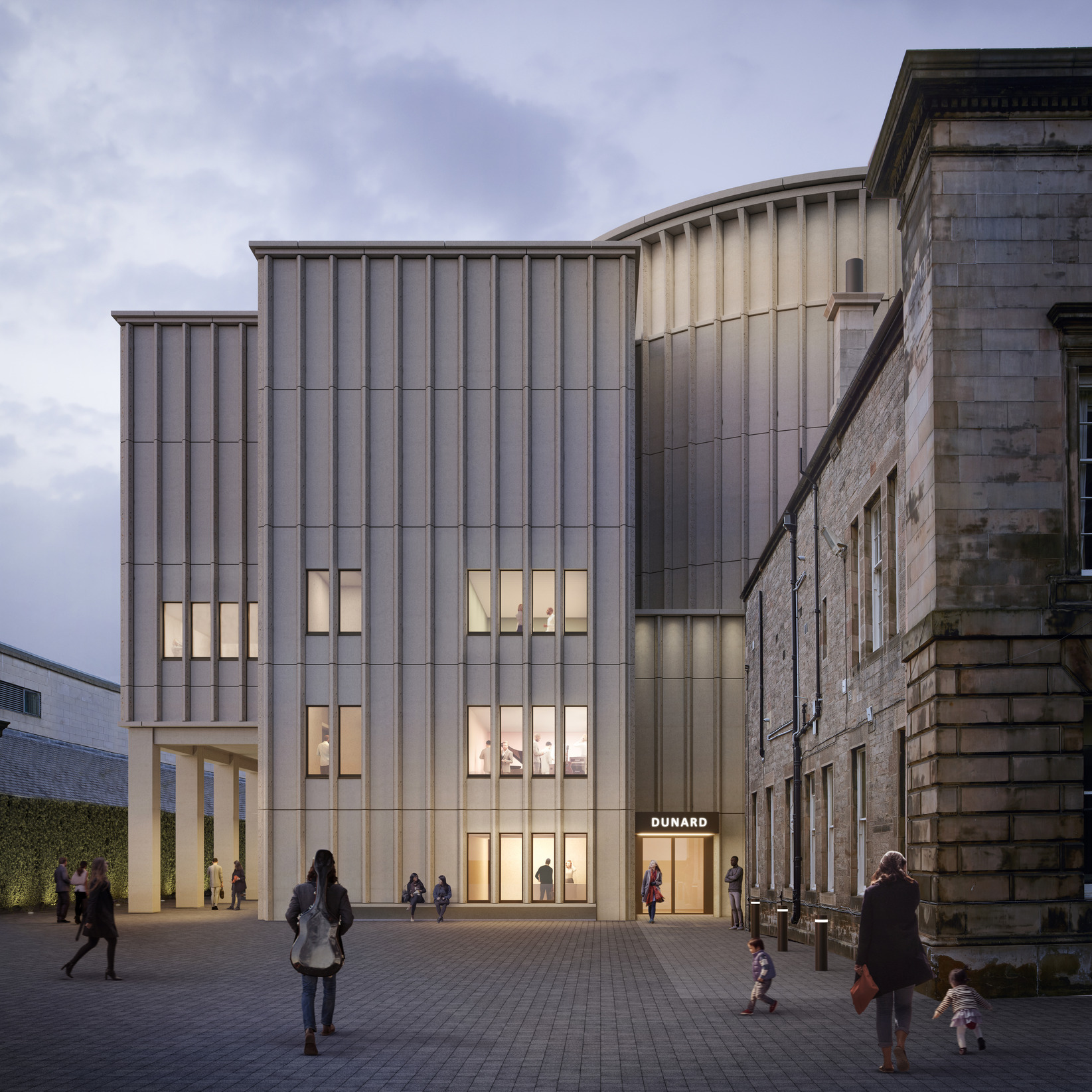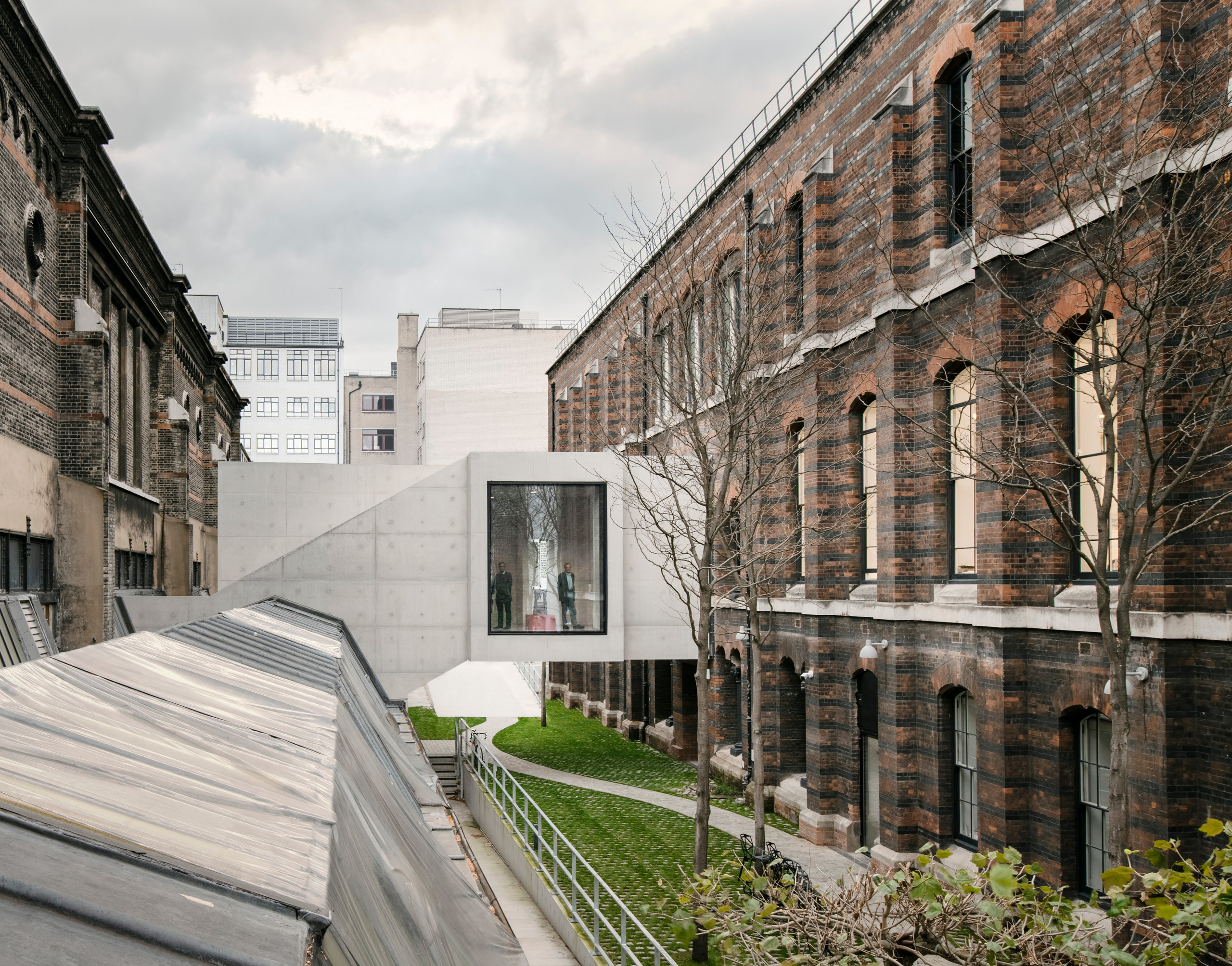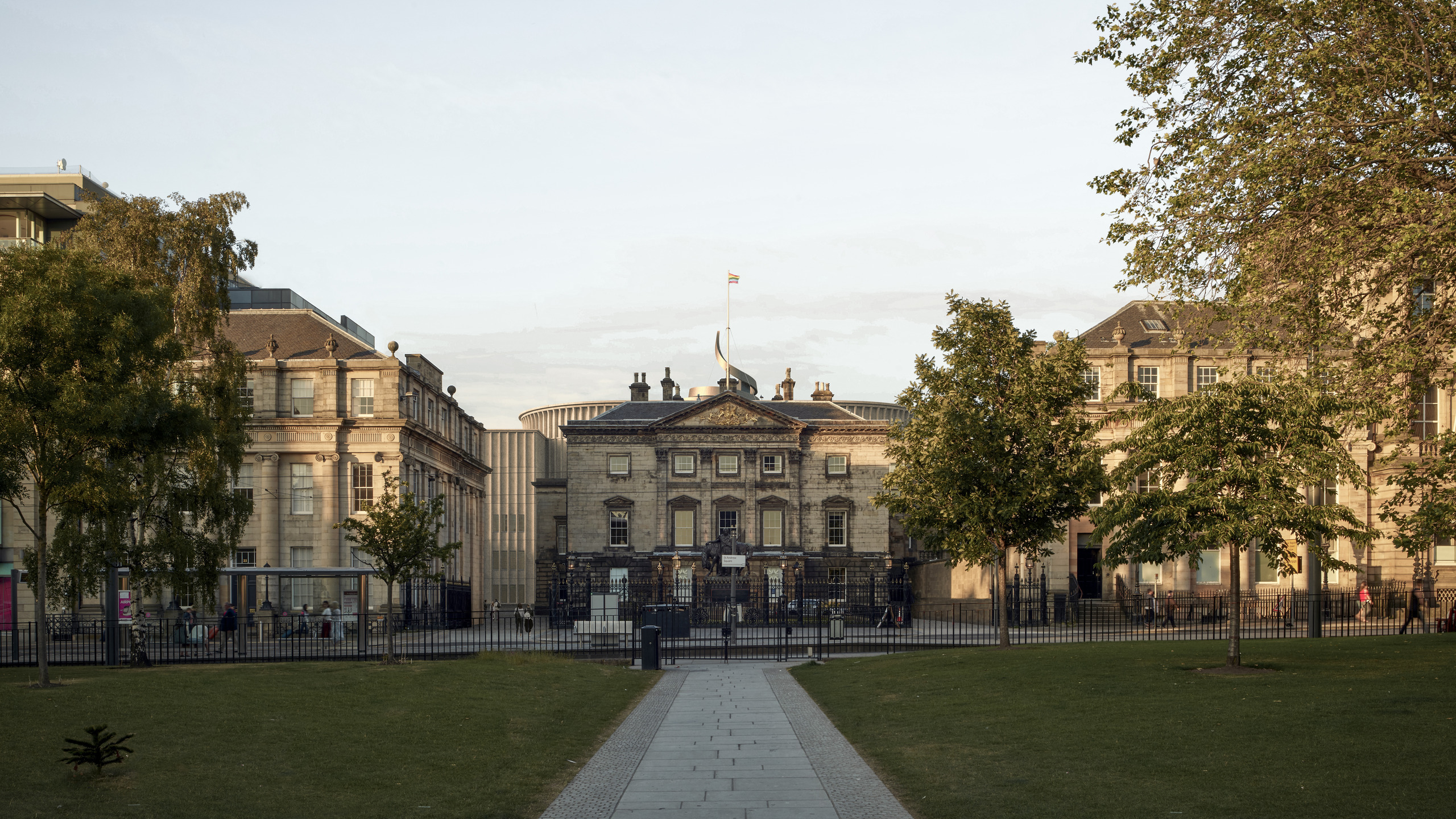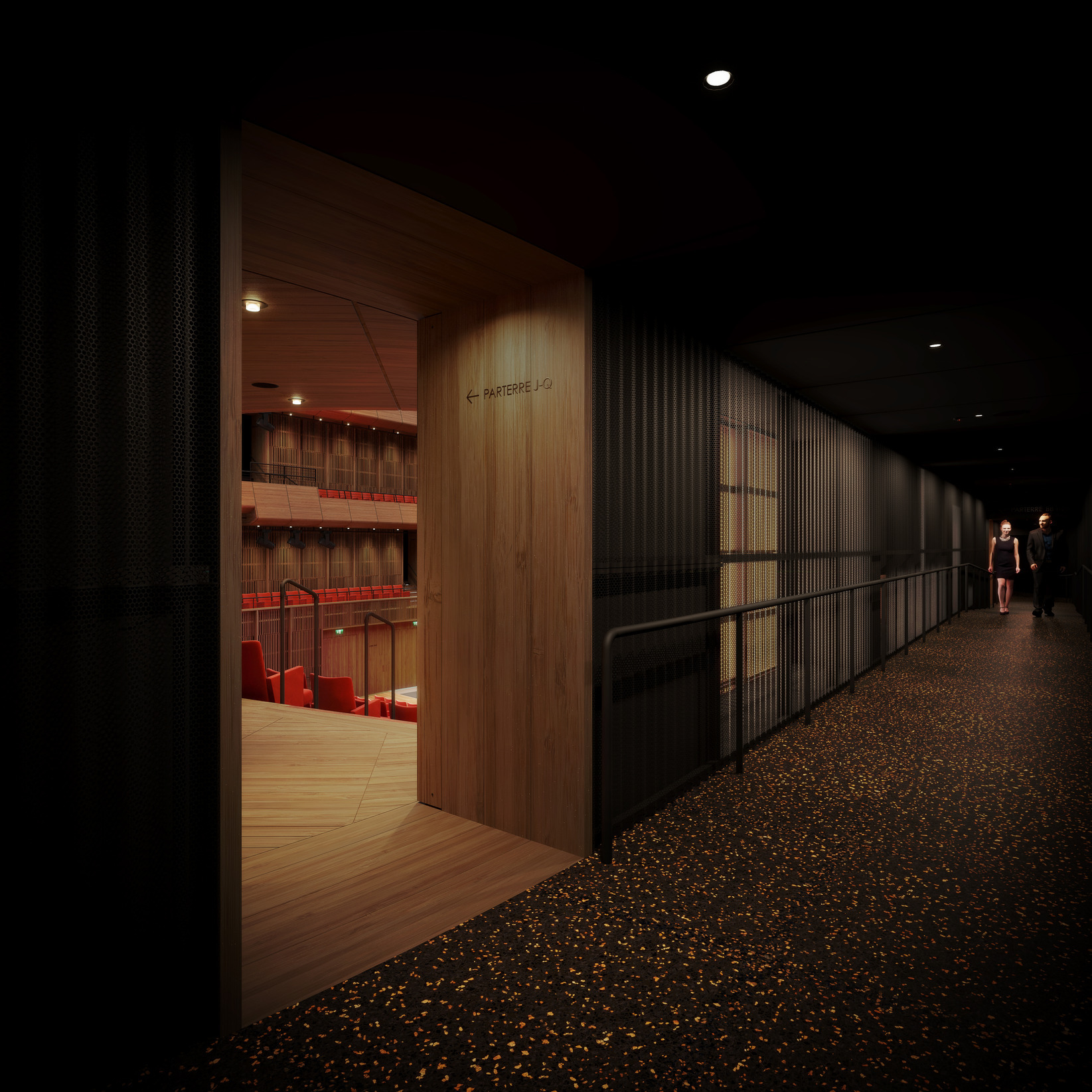Dunard Centre
Edinburgh, UK
2020–
Edinburgh is a city with a rich cultural heritage that plays host to the world’s largest performing arts festival every year. The Dunard Centre will address the long-identified need for a purpose-built, medium-sized performance venue in the city, serving as an Edinburgh base for the Scottish Chamber Orchestra and providing a new space for a range of musical performances – both acoustic and amplified – as well as events. The venue will contain an almost-1,000-seat auditorium, a café, bar and multifunctional spaces for a variety of events as well as an educational outreach programme. Upon completion it will be Edinburgh’s first dedicated new space for music and the performing arts in 100 years.
The new venue is located within Edinburgh’s UNESCO World Heritage Site at the eastern end of its Georgian New Town at a point where this area’s formal qualities meet the more intimate atmosphere of lanes around Register House. It is set behind, and connected to, the Grade-A listed Dundas House (1771) on St Andrew Square which can serve as a formal entrance for special events. On an urban level the project seeks to provide a fitting terminus at the end of George Street, the New Town’s principal axis, in a position where a grand public building was originally intended to be built. It also resolves the immediate urban conditions of the site, which is relatively concealed. The venue connects the surrounding distinct neighbourhoods through several approach routes and entrances, as well as newly landscaped public spaces.
The building’s functions are distributed within three refined yet compact and intersecting volumes. The concert hall sits in the centre within a pure elliptical form; its shape and scale dictated by the acoustic requirements and its position on the site. The hall volume rises above the neighbouring buildings as an urban gesture which terminates the axial view east along George Street, framing Dundas House prominently in the foreground. The venue’s overlapping lower volumes are orthogonal in form and house its ancillary and public functions. These help to reduce the overall mass of the building and anchor it within the scale, geometry and atmosphere of the surrounding lanes, pocket gardens, and neighbouring buildings.
Façades relate to the architecture of the New Town in both their order and materiality. The expression of a base, middle and crown, found on other neoclassical buildings, is picked up by the composition of the venue’s massing while the texture and tone of its concrete references the various sandstones found in the New Town. External public spaces borrow from the scenography of the context creating a series of varied, interconnected areas between the venue and its different approaches.
Data and credits
- Project start
- 2020
- Construction start
- 2025
- Completion due
- 2029
- Gross floor area
- 7,600m²
- Client
- IMPACT Scotland
- User
- Scottish Chamber Orchestra, Edinburgh International Festival and others
- Architect
- David Chipperfield Architects London
- Partners
- David Chipperfield, Alasdair Graham, Billy Prendergast
- Project architects
- Julia Loughnane, Craig Johnston, Nanami Sakimura, Sophie Roycroft
- Project team
- Ricardo Alvarez, Stefan Costache, Patricia Fredborg, Jochen Glemser, John Han, Peter Jurschitzka, Maria Kabaaga, Graeme Laughlan, Julia Loughnane, Ele Mun, Charlie Proctor, Marco Paffi, Daniela Puga, Kacper Ryske, Juliette Sainlez, Carlo Vincelli, Yuxin Wu
- In collaboration with
- Reiach and Hall Architects
- Acoustic consultant
- Nagata Acoustics (performance space), Sandy Brown (venue)
- Theatre consultant
- Theatre Project Consultants
- AV/IT
- Theatre Projects Consultants (performance space), Atelier Ten (venue)
- Landscape architect
- Gross.Max
- Structural engineer
- Whitby Wood
- Services engineer
- Atelier Ten
- Sustainability consultant
- Atelier Ten
- Lighting consultant
- Atelier Ten
- Fire consultant
- Atelier Ten
- Vertical transportation
- Atelier Ten
- Access consultant
- Buro Happold
- Facade consultant
- Thornton Tomassetti
- Daylight sunlight consultant
- Thornton Tomassetti
- CDM advisor
- Alliance CDM
- Planning consultant
- Ryden LLP
- Project management
- Turner & Townsend
- Quantity surveyor
- Thomson Gray
- Visualisations
- Hayes Davidson, David Chipperfield Architects
- ㅤ
- ㅤ
- ㅤ
- ㅤ
- Project phase 1 (2017–20)
- ㅤ
- ㅤ
- ㅤ
- Project start
- 2017
- Gross floor area
- 12,800m²
- Client
- IMPACT Scotland
- Architect
- David Chipperfield Architects London
- Directors
- David Chipperfield, Louise Dier, Billy Prendergast
- Project director
- Alasdair Graham
- Project architect
- Johannes Feder
- Project team
- Ricardo Alvarez, Freddie Armitage, Matt Ball, Nick Beissengroll, Francis Field, Micha Gamper, Sofia Gozzi, Christopher Harvey, Rory Hughes, Daniel Itten, Craig Johnston, Iga Mazur, Antonio Mazzolai, Matthias Odazzi, Charlie Proctor, Simonpietro Salini, Jana Schwalb, Richard Youel
- Competition team
- Freddie Armitage, Alasdair Graham, Craig Johnston, Matthias Odazzi, Charlie Proctor, Hellmer Rahms, Jana Schwalb
- Executive architect
- Reiach and Hall Architects
- Acoustic consultants
- Nagata Acoustics (performance spaces), Arup (venue)
- Theatre consultant
- Theatre Project Consultants
- AV/IT
- Theatre Projects Consultants (performance spaces), Arup (venue)
- Landscape architect
- Gross.Max
- Structural engineer
- Whitby Wood
- Services engineer
- Arup
- Sustainability consultant
- Arup
- Lighting consultant
- Arup
- Vertical transportation
- Arup
- Fire protection
- Arup
- Access consultant
- Arup
- Façade consultant
- Thornton Tomasetti
- Daylight sunlight consultant
- Thornton Tomasetti
- CDM advisor
- Alliance CDM
- Planning consultant
- Ryden LLP
- Project management
- Turner & Townsend
- Quantity surveyor
- Turner & Townsend, Thomson Gray (Stage 4)
- Visualisations
- Hayes Davidson, David Chipperfield Architects
